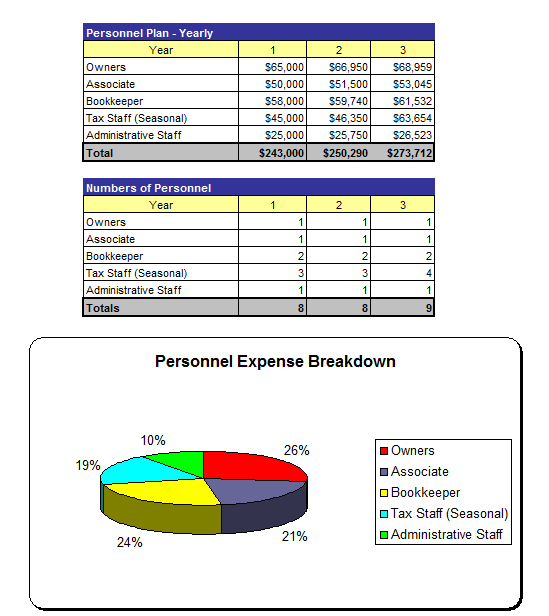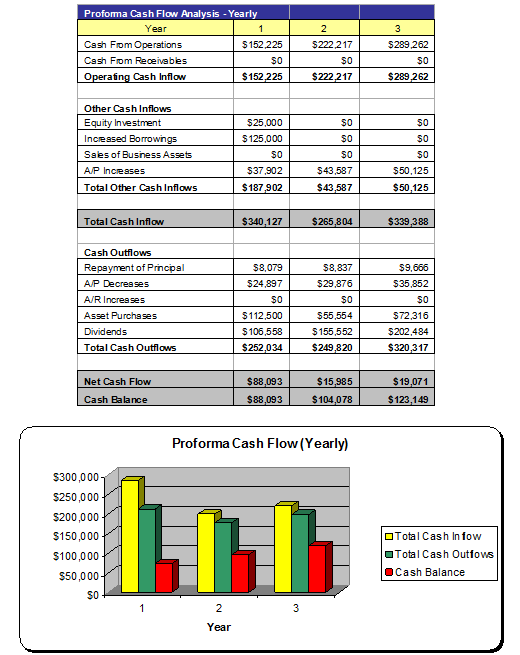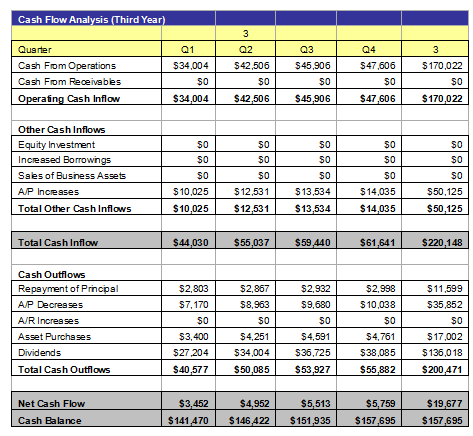Free Pool Hall Business Plan
For Raising Capital from Investors, Banks, or Grant Companies!
Please note that the financials
in this complete free business plan are completely fictitious and may not
match the text of the business plan below. This free business plan demonstration
purposes only. If you are interested in purchasing the completed editable MS Word
and Excel documents for this business plan, please click the button below! Also,
the text of the business plan is formatted with a fully automated
table of contents.
Return to
Samples Page
It should be noted that there is no special software required to use these
templates. All business plans come in Microsoft Word and Microsoft Excel format.
Each business plan features:
- Excecutive Summary
- Company and Financing Summary
- Products and Services Overview
- Strategic Analysis with current research!
- Marketing Plan
- Personnel Plan
- 3 Year Advanced Financial Plan
- Expanded Financial Plan with Monthly Financials
- Loan Amortization and ROI Tools
- FREE PowerPoint Presentation for Banks, Investors,
or Grant Companies!
1.0 Executive Summary
The purpose of this business plan is to raise $100,000 for the development of a billiards/pool hall while showcasing the expected financials and operations over the next three years. The Pool Hall, Inc. (“the Company”) is a New York based corporation that will provide usage of pool tables and a full bar/limited food service to customers in its targeted market. The Company was founded by John Doe.
1.1 Products and Services
The Pool Hall will be an upscale location that will feature a full bar with wine, beer, and spirits as well as an expansive number of green felt pool tables for customer use. The location will feature low key lighting and a classic pool hall atmosphere. Alcohol and food sales will be the primary revenue stream for the business. The third section of the business plan will further describe the services offered by the Pool Hall.
1.2 The Financing
Mr. Doe is seeking to raise $100,000 from as a bank loan. The interest rate and loan agreement are to be further discussed during negotiation. This business plan assumes that the business will receive a 10 year loan with a 9% fixed interest rate.
1.3 Mission Statement
The Pool Hall’s mission is to become the recognized local leader in its targeted market for providing an outstanding pool hall experience.
1.4 Mangement Team
The Company was founded by John Doe. Mr. Doe has more than 10 years of experience in the retail management industry. Through his expertise, he will be able to bring the operations of the business to profitability within its first year of operations.
1.5 Sales Forecasts
Mr. Doe expects a strong rate of growth at the start of operations. Below are the expected financials over the next three years.

1.6 Expansion Plan
The Founder expects that the business will aggressively expand during the first three years of operation. Mr. Doe intends to implement marketing campaigns that will effectively target individuals within the target market.
2.0 Company and Financing Summary
2.1 Registered Name and Corporate Structure
Pool Hall, Inc. The Company is registered as a corporation in the State of New York.
2.2 Required Funds
At this time, the Pool Hall requires $100,000 of debt funds. Below is a breakdown of how these funds will be used:

2.3 Investor Equity
Mr. Doe is not seeking an investment from a third party at this time.
2.4 Management Equity
John Doe owns 100% of the Pool Hall, Inc.
2.5 Exit Strategy
If the business is very successful, Mr. Doe may seek to sell the business to a third party for a significant earnings multiple. Most likely, the Company will hire a qualified business broker to sell the business on behalf of the Pool Hall. Based on historical numbers, the business could fetch a sales premium of up to 4 times earnings.
3.0 Products and Services
Below is a description of the services and products offered by the Pool Hall.
3.1 Sales of Alcoholic Beverages and Food
The primary revenue stream for the business will come from the sale of alcohol to patrons. The Pool Hall will maintain an expansive bar that will feature a number of spirits, an expansive wine list, and a number of domestic and imported beers. At all times, the tavern will comply with all state and municipal regulations regarding the sale of alcohol. For each patron, a valid ID will be required to ensure that the patron is 21 or older. For very busy evenings, Mr. Doe may hire a part time door bouncer to check identifications as customers enter the bar. Additionally, Management will keep all liquor licenses up to date, and will file the appropriate documentation and fees on a quarterly basis.
3.2 Pool Table Usage
The secondary revenue center for the business will be the ongoing usage of the Company’s pool tables. At any given time, Management anticipates that the business will have fifteen to twenty pool tables. Each round of pool will generate $1.00 in revenue for the business. Per hour usage of pool tables will cost $5.00
4.0 Strategic and Market Analysis
4.1 Economic Outlook
This section of the analysis will detail the economic climate, the pool hall industry, the customer profile, and the competition that the business will face as it progresses through its business operations. Currently, the economic market condition in the United States is in recession. This slowdown in the economy has also greatly impacted real estate sales, which has halted to historical lows. Many economists expect that this recession will continue until mid-2010, at which point the economy will begin a prolonged recovery period.
4.2 Industry Analysis
The retail entertainment facility (pool halls) industry generates approximately $1.5 billion dollars a year among 2,700 companies that operate pool halls and arcades. These revenue numbers do not include amusement parks, casinos, or resorts that provide arcade machines as a value added benefit to patrons. The industry employs more than 30,000 people and provides aggregate annual payrolls of $350 million dollars. As stated earlier, the pool hall industry is mature. The expected continued growth of these businesses is expected to mirror the general population growth plus the rate of inflation.
4.3 Customer Profile
In this section of the analysis, you should describe the type of customer you are seeking to acquire. These traits include income size, type of business/occupation; how far away from your business is to your customer, and what the customer is looking for. In this section, you can also put demographic information about your target market including population size, income demographics, level of education, etc.
4.4 Competitive Analysis
This is one of the sections of the business plan that you must write completely on your own. The key to writing a strong competitive analysis is that you do your research on the local competition. Find out who your competitors are by searching online directories and searching in your local Yellow Pages. If there are a number of competitors in the same industry (meaning that it is not feasible to describe each one) then showcase the number of businesses that compete with you, and why your business will provide customers with service/products that are of better quality or less expensive than your competition.
5.0 Marketing Plan
The Pool Hall intends to maintain an extensive marketing campaign that will ensure maximum visibility for the business in its targeted market. Below is an overview of the marketing strategies and objectives of the Pool Hall.
5.1 Marketing Objectives
-
• Develop an online presence by developing a website and placing the Company’s name and contact information with online directories.
-
• Implement a local campaign with the Company’s targeted market via the use of flyers, local newspaper advertisements, and word of advertising.
-
5.2 Marketing Strategies
The Pool Hall will use a number of marketing strategies that will allow the business to generate revenue and visibility from the onset of its operations. Primarily, the Company will generate a significant amount of visibility through its retail location. One of the reasons that Mr. Doe is seeking a high visibility location is so that the Pool Hall generates a substantial amount of walk-in traffic. Prior to opening the Pool Hall facility, Management intends to send mailing and circulars to local residents within selected areas of the target market so that the business has instant traffic and visibility upon its grand opening. Finally, as the business expands, the Pool Hall will aggressively implement a broad based marketing strategy which may include local billboards, radio, and advertisements in local area newspapers and publications. As stated above, the Company will use these marketing strategies at the onset of operations for grand opening announcements.
5.3 Pricing
In this section, describe the pricing of your services and products. You should provide as much information as possible about your pricing as possible in this section. However, if you have hundreds of items, condense your product list categorically. This section of the business plan should not span more than 1 page.
6.0 Organizational Plan and Personnel Summary
6.1 Corporate Organization

6.2 Organizational Budget

6.3 Management Biographies
In this section of the business plan, you should write a two to four paragraph biography
about your work experience, your education, and your skill set. For each owner or
key employee, you should provide a brief biography in this section.
7.0 Financial Plan
7.1 Underlying Assumptions
-
• The Pool Hall will have an annual revenue growth rate of 16% per year.
-
• The Owner will acquire $100,000 of debt funds to develop the business.
-
• The loan will have a 10 year term with a 9% interest rate.
7.2 Sensitivity Analysis
The Company is providing pool tables for use among customers, which are not a necessity. However, the pricing point for the Pool Hall’s services is extremely low, and the general economy would need a serious recession before a revenue decline. The high margin revenue generated by the business will allow the Company to operate profitably despite negative economic climates.
7.3 Source of Funds

7.4 General Assumptions

7.5 Profit and Loss Statements

7.6 Cash Flow Analysis

7.7 Balance Sheet
 .
.
7.8 General Assumptions

7.9 Business Ratios

Expanded Profit and Loss Statements




Expanded Cash Flow Analysis



